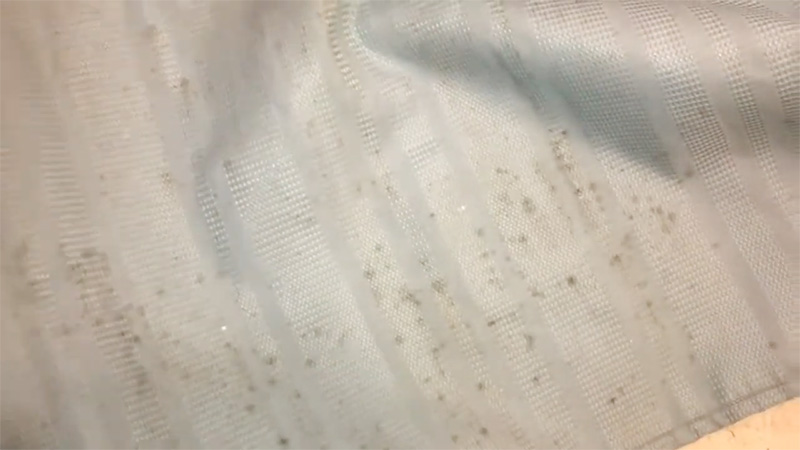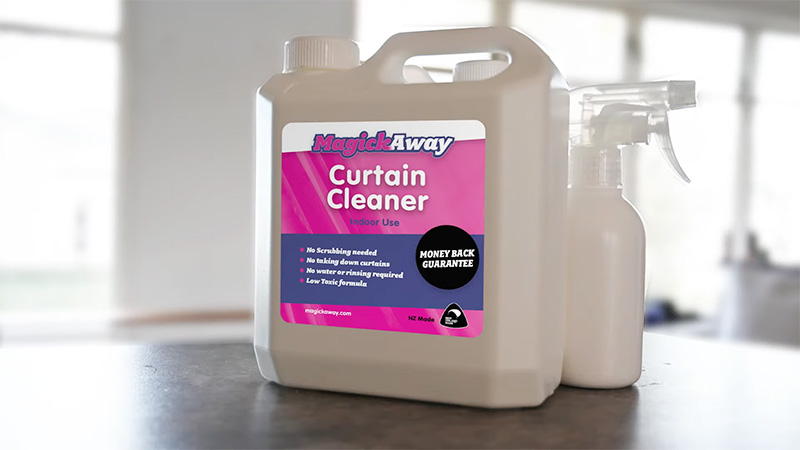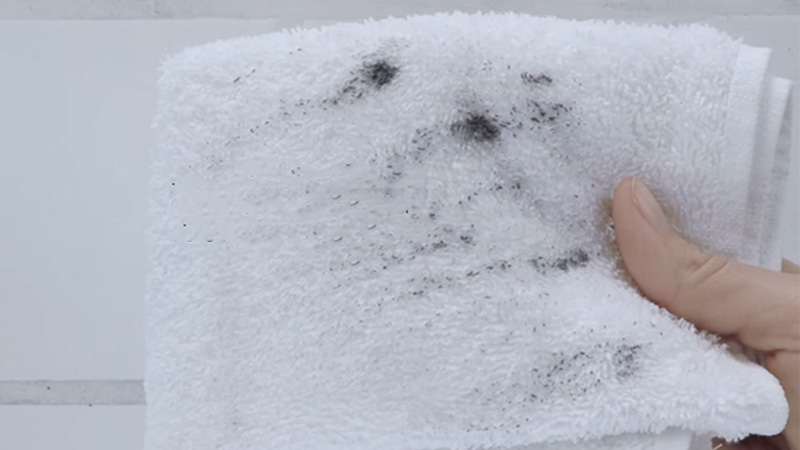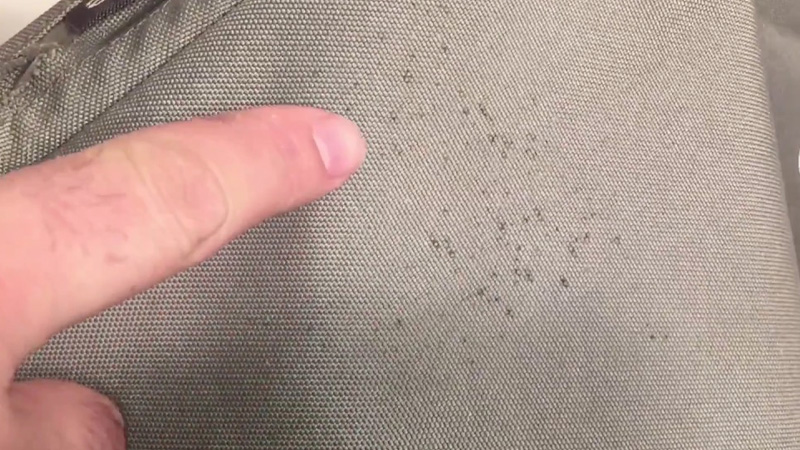Discovering mold on fabric can be disheartening, as it not only damages the material but also poses potential health risks. Whether it’s your favorite clothing, upholstery, or linens, dealing with mold is a pressing concern.
Learning how to remove mold from fabric is not only a practical skill but also a crucial step in preserving your textiles and maintaining a healthy living environment.
In this comprehensive guide, we will explore effective methods and tips for safely and efficiently removing mold from fabric. From natural remedies like vinegar and baking soda to commercial mold removers, you’ll find a range of solutions to tackle this common issue.
We’ll also discuss preventive measures to minimize the chances of mold returning to your cherished fabrics.
With the right knowledge and action, you can restore your mold-affected fabrics to their former glory, ensuring they continue to provide comfort and aesthetic appeal for years to come.

How To Remove Mold From Fabric?
Removing mold from fabric is essential not only for restoring the fabric’s appearance but also for preventing health issues. Here are some simple methods:
Soap and Water
Mix a solution of mild soap and warm water. Dampen a clean cloth or sponge with soapy water and gently scrub the moldy area. Rinse thoroughly and allow the fabric to air dry in direct sunlight. Sunlight helps kill mold spores and prevents regrowth.
Vinegar
Create a mixture of equal parts white vinegar and water. Dab a clean cloth or sponge in the solution and blot the moldy area. Avoid rinsing, as vinegar’s acidity helps inhibit mold growth. Allow the fabric to air dry in sunlight.
Hydrogen Peroxide
Combine equal parts water and 3% hydrogen peroxide. Apply the solution to the moldy area and let it sit for 10-15 minutes.
Gently scrub with a cloth or sponge, then rinse and air dry in sunlight. Hydrogen peroxide is effective at killing mold spores.
Baking Soda Paste
Make a paste by mixing baking soda with a small amount of water. Spread the paste over the moldy fabric and gently scrub with a soft brush or cloth. Rinse thoroughly, then let the fabric air dry in the sun. Baking soda not only cleans but also helps eliminate musty odors.
Lemon Juice
Apply lemon juice directly to the moldy area and allow it to sit in direct sunlight for several hours. Lemon juice has natural antibacterial and antifungal properties that can help eliminate mold stains and odors. Rinse and air dry afterward.
Salt and Lemon
Combine salt and freshly squeezed lemon juice to form a paste. Spread the paste over the moldy fabric and let it sit in the sun for a few hours. Scrub gently, rinse, and air dry. The combination of salt and lemon acts as a natural mold remover.
Commercial Mold Removers
If the mold infestation is severe or the fabric is valuable, consider using a commercial mold remover designed for fabrics. Follow the manufacturer’s instructions carefully and ensure proper ventilation when using these products.
Remember to take precautions when dealing with mold, such as wearing gloves and a mask to avoid inhaling spores. Additionally, always test any cleaning method on a small, inconspicuous area of the fabric to ensure it doesn’t cause discoloration or damage.
Mold removal is essential not only for fabric aesthetics but also for maintaining a healthy living environment.
Necessary Products For Removing Mold From Clothes

Here’s a table listing the necessary products you’ll need for removing mold from fabric:
| Material | Description |
| White vinegar | A natural mold remover and disinfectant. |
| Baking soda | Helps to deodorize and remove mold stains. |
| Water | For diluting vinegar and making a cleaning solution. |
| Soft-bristle brush | Used to scrub the mold off the fabric gently. |
| Old toothbrush | Helpful for smaller or intricate areas. |
| Plastic sheet or drop cloth | To protect the work area from mold spores. |
| Bucket or spray bottle | For mixing and applying the cleaning solution. |
| Rubber gloves | To protect your hands during cleaning. |
| Face mask or respirator | To protect against inhaling mold spores. |
| Safety goggles | To protect your eyes from splashes. |
| Laundry detergent | For washing the fabric after mold removal. |
| Sunlight | Natural sunlight can help kill mold spores and remove odors. |
Always ensure proper ventilation when working with mold, and take safety precautions to avoid inhaling or spreading mold spores. Additionally, check the care label of the fabric to ensure your chosen cleaning method is appropriate for the material.
What Does Mold-On Clothes Look Like?

Mold on clothes can take on various appearances depending on factors like the type of mold, humidity levels, and how long the clothing has been affected. Here are the signs of mold on clothes:
Discoloration
One of the most common signs of mold on clothes is discoloration. You may notice green, black, brown, or gray patches or spots on the fabric. These patches can vary in size and intensity, often standing out against the original color of the clothing.
Musty Odor
Mold often comes with a distinct musty or earthy odor. If your clothes have a lingering, unpleasant scent even after washing, it could be a sign of mold infestation.
Fuzzy Growth
Some molds may appear as fuzzy or powdery growth on the fabric’s surface. These fuzzy patches can range in texture and color from white to green or black and are often accompanied by a damp feeling.
Stains or Spots
Mold can leave behind stains or spots on clothing. These stains may not always be obvious, but upon close inspection, you may notice discolored areas or spots that resist regular cleaning efforts.
Deterioration of Fabric
Prolonged exposure to mold can lead to fabric deterioration. The affected areas may feel weakened, thinner, or more fragile than the rest of the clothing, potentially leading to holes or tears.
Allergic Reactions
Mold spores can become airborne and cause allergic reactions when inhaled. If you experience symptoms like sneezing, coughing, itchy eyes, or skin irritation when handling moldy clothes, it’s a sign of mold presence.
Surface Texture Changes
In some cases, mold can alter the texture of the fabric. Affected areas may feel slimy, sticky, or gritty to the touch, indicating a mold infestation.
If you suspect mold on your clothing, it’s essential to address it promptly to prevent further growth and potential health issues. Mold not only damages fabrics but can also lead to respiratory problems, so taking action as soon as you notice these signs is crucial.
How To Get Rid Of Mold Smell In The Closet?

Eliminating a mold smell in a closet is essential not only for a fresh and pleasant environment but also for preventing further mold growth.
Here are some tips on how to get rid of a mold smell in the closet:
Remove Mold-Infested Items
The first step in eliminating a mold smell is to identify and remove any mold-infested items from the closet. This includes clothing, shoes, or any porous materials that may be harboring mold spores.
Wash or clean these items thoroughly, and consider discarding severely affected items.
Ventilation
Improve ventilation in the closet by keeping the doors or windows open whenever possible. Fresh air circulation helps reduce moisture levels and prevents mold growth.
Consider using a fan or dehumidifier to further enhance air circulation and reduce humidity.
Clean the Closet
Thoroughly clean the closet’s surfaces using a mixture of white vinegar and water or a mild detergent. Wipe down shelves, walls, and any visible mold growth. Be sure to wear protective gear like gloves and a mask when handling mold-infested areas.
Activated Charcoal
Place activated charcoal or charcoal odor absorbers in the closet to help absorb mold odors. These natural odor eliminators can be effective in reducing musty smells over time. Replace or recharge the charcoal as needed.
Baking Soda
Another natural odor absorber is baking soda. Sprinkle an open box of baking soda on a closet shelf or place small bowls filled with it throughout the closet. Baking soda can help neutralize odors.
Cedar Wood Products
Cedar wood products, such as cedar blocks or cedar sachets, not only help absorb odors but also repel moths and insects. These can be effective in keeping the closet smelling fresh.
Anti-Mold Products
Consider using anti-mold products or deodorizers designed specifically for closets and small spaces. These products often contain ingredients that target mold odors and prevent future mold growth. Follow the manufacturer’s instructions for use.
Regular maintenance and preventive measures, such as keeping the closet dry and well-ventilated, are crucial in preventing mold odors from returning. Addressing the source of moisture and humidity is key to keeping mold and its associated smells at bay.
FAQs
Can I remove mold from the fabric using bleach?
Yes, you can use a diluted bleach solution to remove mold from white or colorfast fabrics. Mix one part bleach with four parts water, then apply the solution to the moldy area and let it sit for 10-15 minutes.
What is the best way to prevent mold from returning on cleaned fabric?
To prevent mold from returning, ensure that the fabric remains dry and well-ventilated. Store clothing and textiles in a dry area, avoid damp or humid conditions and use dehumidifiers if needed.
Is it safe to remove mold from fabric using vinegar?
Yes, vinegar is a safe and effective natural mold remover. Mix equal parts white vinegar and water, then apply the solution to the moldy fabric. Allow it to sit for an hour before washing.
Can I use a washing machine to remove mold from the fabric?
Yes, you can use a washing machine to remove mold from the fabric. Use hot water and a heavy-duty detergent for best results. Add white vinegar or baking soda to the wash cycle to enhance mold removal.
Can I save clothing with severe mold damage?
Clothing with severe mold damage may be challenging to salvage. If the fabric is significantly weakened or deteriorated, it’s best to discard it. However, if the damage is minimal, you can try mold removal methods, but success may vary depending on the extent of the infestation and the fabric type.
Conclusion
Removing mold from fabric is a task that, when handled promptly and correctly, can salvage your beloved textiles and protect your well-being. By following the methods and precautions outlined in this guide, you have the tools to effectively combat mold on fabric and prevent its return.
Remember to act swiftly when you spot mold, as prolonged exposure can lead to irreversible damage. Whether you opt for natural remedies or commercial mold removers, always prioritize safety by wearing protective gear and conducting spot tests in inconspicuous areas.
Additionally, maintaining a dry and well-ventilated environment for your fabrics can significantly reduce the risk of mold growth in the future. With diligence and care, you can enjoy your mold-free fabrics while ensuring a healthy living space for yourself and your loved ones.
Leave a Reply